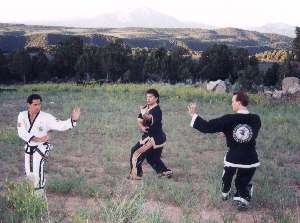
|
Taught by
National Association of Martial Art Educators
Accredited and Certified teachers.
|
|
School of Chung Moo Doe
(Oom Yung Doe)
For information on programs in Illinois, call
(847)-543-4505
info@chungmoodoe-il.com
|

|
The right hand is a reminder to accept a good or right challenge in life. The two swords stand
for balance and harmony.
|
|




